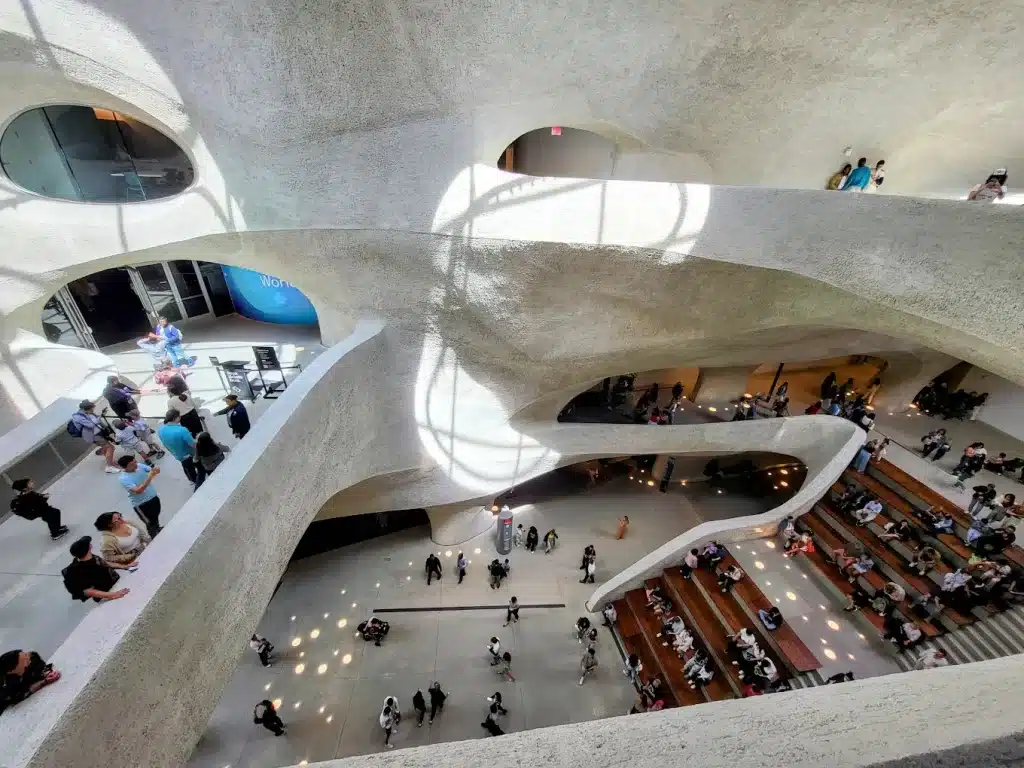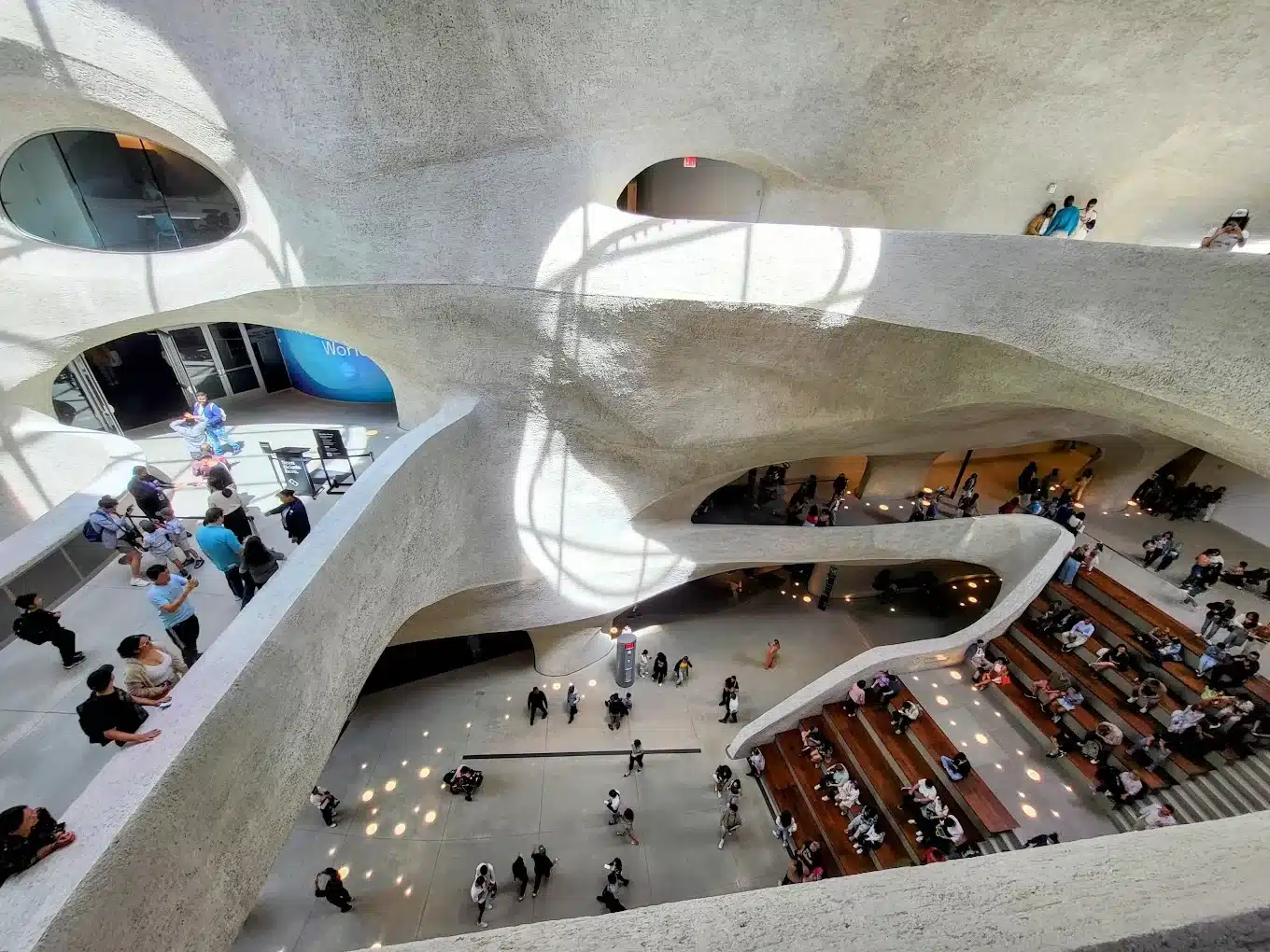Spectacular architecture designed to spark curiosity and creativity and showcase all the amazement of science and nature. The new Gilder Center features new exhibition galleries and one-of-a-kind experiences, including an insectarium, butterfly vivarium, floor-to-ceiling collections displays, and more—and connects to the rest of the American Museum of Natural History on four floors. Fostering a greater understanding of science and more public access to science theories, research and exhibits, this center brings a fresh perspective to New York City.
Kenneth C. Griffin Exploration Atrium is a four-story-high civic space and is the main opening into the Gilder Center. It also connects Central Park West to Columbus Avenue, and opens onto Theodore Roosevelt Park.
The 230,000-square-foot space is designed by Jeanne Gang and Studio Gang and will serve as a central hub connecting the Museum’s buildings and “creating a continuous campus across four city blocks, as envisioned more than 150 years ago,” a press release states. It’s symbolic too, highlighting one of the Museum’s founding principles that “all life is connected.”
The new center opened to the public May 5, along with an additional section of Theodore Roosevelt Park adjacent to the entrance. The science center, along with the new features and exhibits, creates a more cohesive connection between all parts of the Museum of Natural History.
New exhibitions and immersive experiences include:
Susan and Peter J. Solomon Insectarium
The first Museum gallery in more than 50 years completely dedicated to insects,This includes oversized models of honeybees leading visitors to a massive hive recreation, and one of the world’s largest displays of leafcutter ants. At the core of the experience is how insects connect all aspects of life and history.
Immersive experience: Invisible Worlds
Explores networks of life at all scales—including some that are too fast, too small, or too slow for the human eye. At key moments, you’ll become part of the story as your movements affect the projections around you.
Gottesman Research Library and Learning Center
This new Museum library is open to the public and housesinformational resources, for both print and digital. It includes a new scholars’ reading room, exhibition alcove, group study zone, and an adult learning zone, plus will display collections like the Museum’s Rare Book Collection.
Louis V. Gerstner, Jr. Collections Core
Three stories of research & collections that showcase the Museum’s collections of “millions of scientific specimens and displays offering insight into the evidence and process of scientific discovery in various types of collections, from fossils to insects.”
Davis Family Butterfly Vivarium
Open all year, mingle among the butterflies.
To purchase tickets, see updated schedules visit www.amnh.org/

